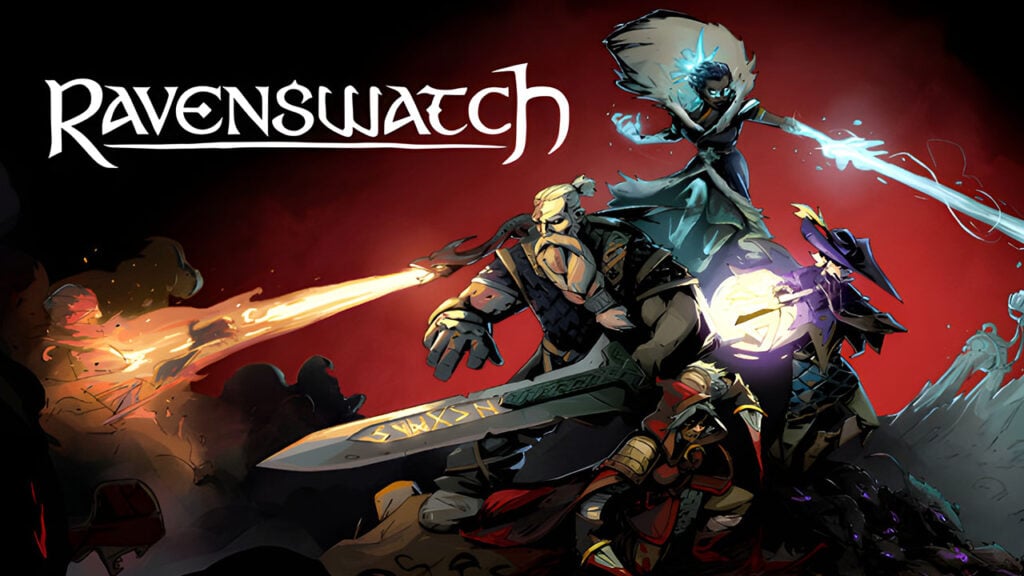From the creators of the highly esteemed Curse of the Dead Gods comes Ravenswatch. A brand new top-down, Diablo-esque ARPG, it’s releasing on Early Access on the 6th of April on PC, with console ports arriving at a later date. With a whole year of support planned, Passtech Games have promised a suite of more content, heroes and gameplay to come.
Is the current iteration of this title worth getting up at the crack of dawn to beat the masses to? Well, that’s what we’re here to find out.
A Fairy Tale Lacking Sparkle
Ravenswatch at present features one “Chapter”, though I’m hesitant to really call it that. There’s literally no story delivery currently on show, with a simple loading screen still-image and your 6 available heroes as all that stands as exposition. What is this land? Who are we within it? The narrative chops are, at present, about as imposingly tall as Lord Farquad.
As such, I can’t tell you very much about its story at all. The heroes themselves however, are quite intriguing. Each controllable character is a creative spin on old folk or fairy tale legend. Little Red Riding Hood as Scarlett, The Red Hood, that kind of thing. The designs of each hero and their accompanying powers are fantastically inspired and creative, offering not just visual variety but unique gameplay dynamics too.
Once you’ve selected your legend of folk tales, you’ll spawn into Ravenswatch’s first chapter level. In this land of seemingly no context, there’s a “Nightmare” which is corrupting the world around it. You have 4 in-game days with which to arm, level up and prepare yourself for a showdown bards will sing of for generations.
Should you be successful, that is.
There’s clearly a lot more planned for Ravenswatch in terms of lore and narrative, but I simply can’t tell you anything about it as the available version has none. This is gameplay only at this stage, which is disappointing given the premise of the heroes. However, once you come to terms with this, you can get to the good old dance of hacking and slashing through dozens of beasts in rogue-lite action.
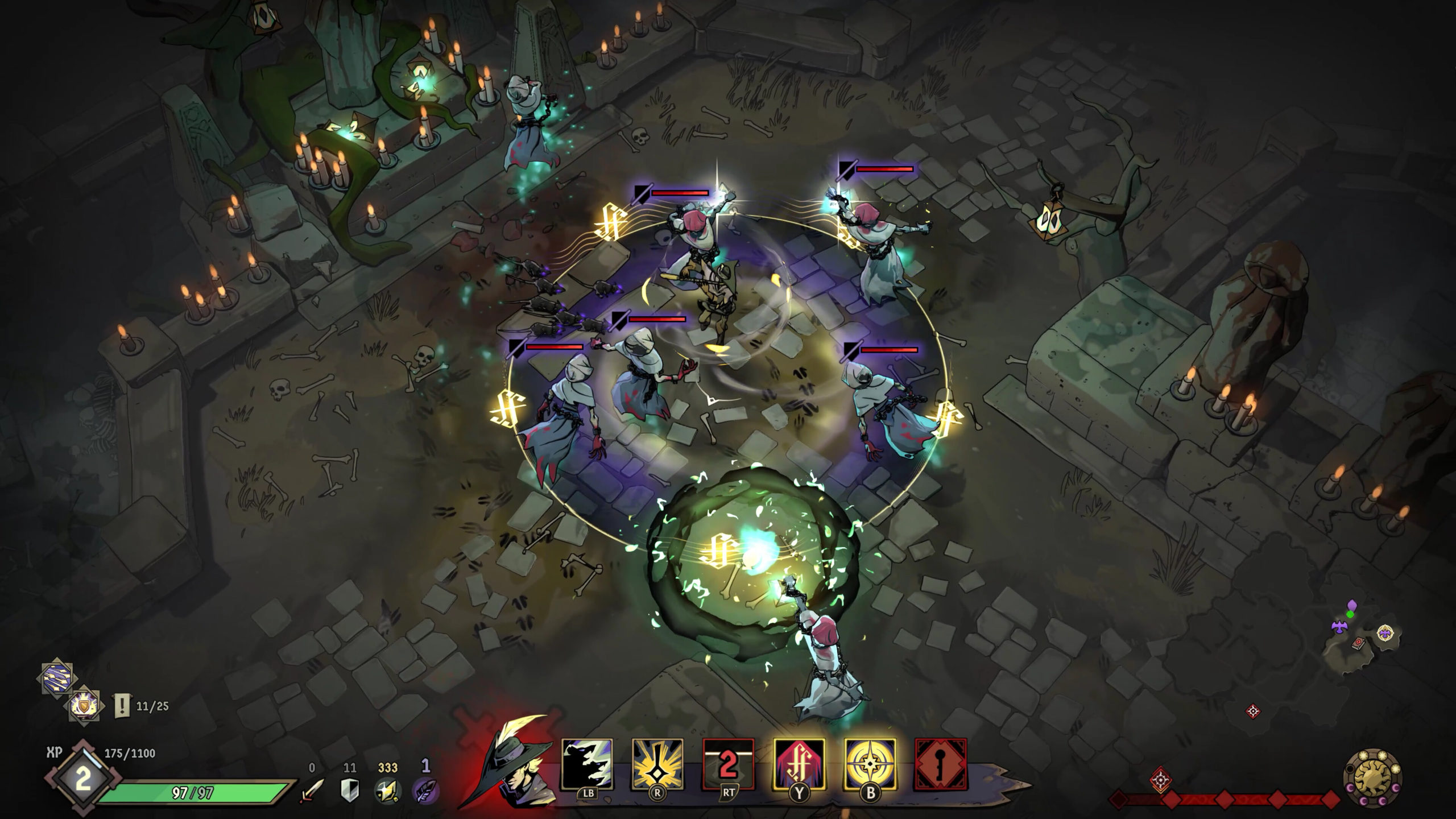
Rogue Ravens
Each run you set out on will drop you into a – you guessed it – procedurally generated medium-sized landscape. Your starting area is a safe haven where you can purchase consumables and ability upgrades using Shards. The second you leave the starting area, your 4-day timer starts counting down. Very Majora’s Mask.
You always start at level one, meaning you have to the use the available time to slay foes for XP and complete various tasks to improve your odds against the Nightmare. Icons on the map will indicate points-of-interest like chests for boons, surviving 3 waves of enemies to weaken the Nightmare’s health, caves with mini-bosses, statues to reveal the map and increasing max health, that kind of thing.
In and of itself, it’s a satisfying loop. You start with 3 icons marked, then it’s up to you to explore and take on the challenges. There’s an element of strategy of what to prioritise (always find the spots to weaken the beast), as it’s unlikely you’ll cover more than 75% of the map given the limited timeframe you have to work with.
However, the procedural generation will naturally throw up some seeds that are far worse than others and the imbalance is quite apparent, creating an inconsistent experience. Unlike something akin to Hades, which is almost perfectly balanced between randomisation and consistency, Ravenswatch still needs to find a more stable perch. Also, the one available quest on each seed seemed really punishing, meaning I never actually managed to complete it and I largely ignored it past the first two efforts.
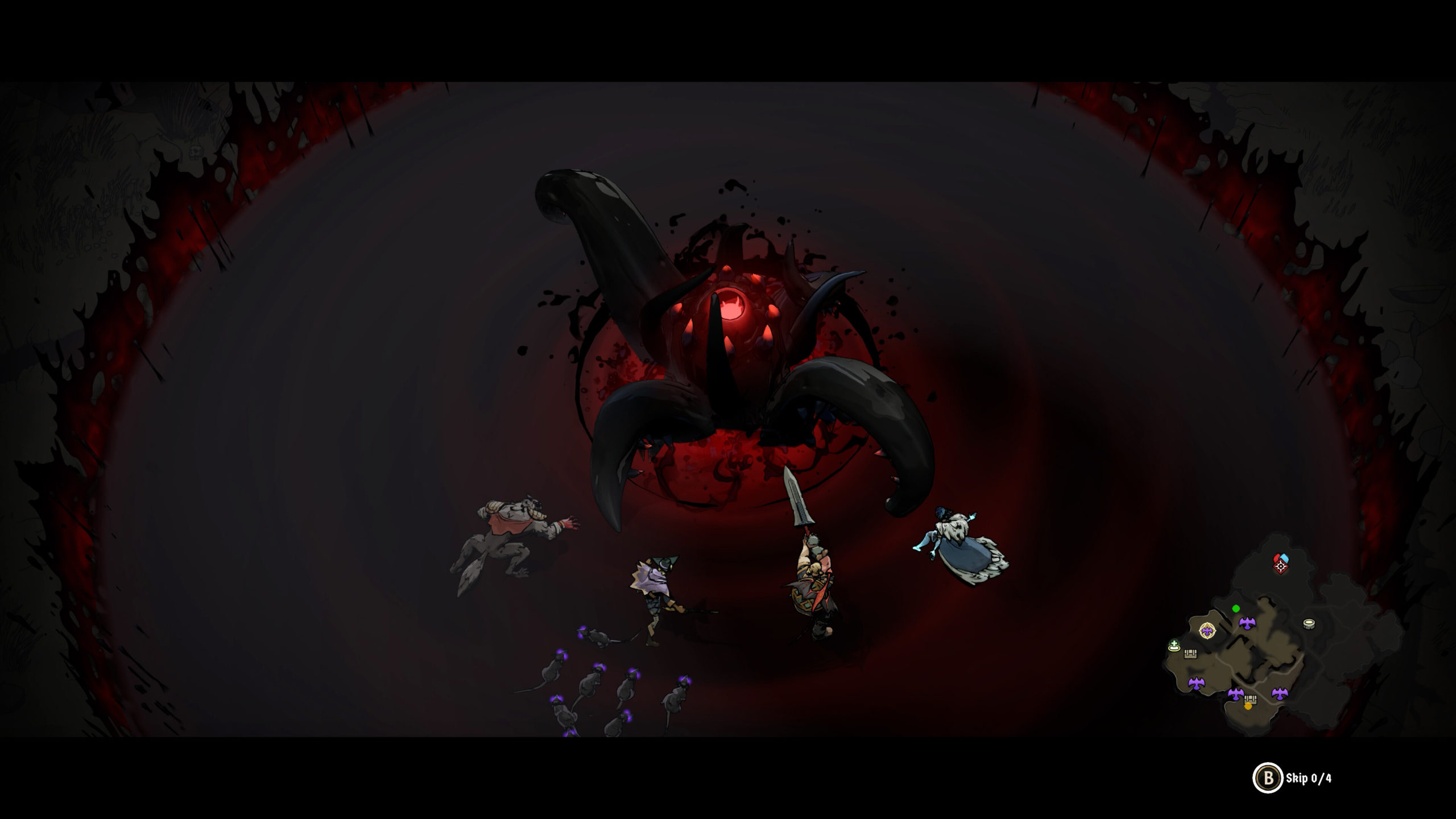
The Pied Sniper
As I mentioned at the start, the 6 available heroes are, alongside the art style, the highlight of Ravenswatch’s admittedly meagre current content offering. Scarlett, Beowulf, Aladdin, The Pied Pipper, Snow Queen and Melusine round out the current gang. It’s like the TMNT only with a flute archer and a kick-ass mermaid.
Each class has their own unique set of attacks, abilities and style. Pied Piper and Melusine for example, excel at keeping enemies at distance and peppering in damage or buffs to teammates. Scarlett or Beowulf are more melee centered, with an emphasis on sword/knife swipes and powerful specials. Scarlett also transforms into a werewolf with a whole new set of abilities at night, which is awesome.
As you progress in a run and level up, you can upgrade abilities much like Hades’ boon system, adding extra effects, buffs or stats to your combat arsenal. It’s fulfilling and the difference between level 1 and level 5 is substantial, plus at level 5 you unlock your hero’s powerful super move.
However, range-focused classes are at a significant disadvantage in certain tasks and boss fights compared to their melee counterparts, particularly on harder difficulties. Ravenswatch feels tailormade for co-op and squad gameplay with how each hero performs a unique role. I had more than a few frustrating moments getting butchered trying to use a ranged character in a closed off horde circle and the Nightmare boss is a giant pain-in-the-ass for certain heroes as opposed to a satisfying challenge.
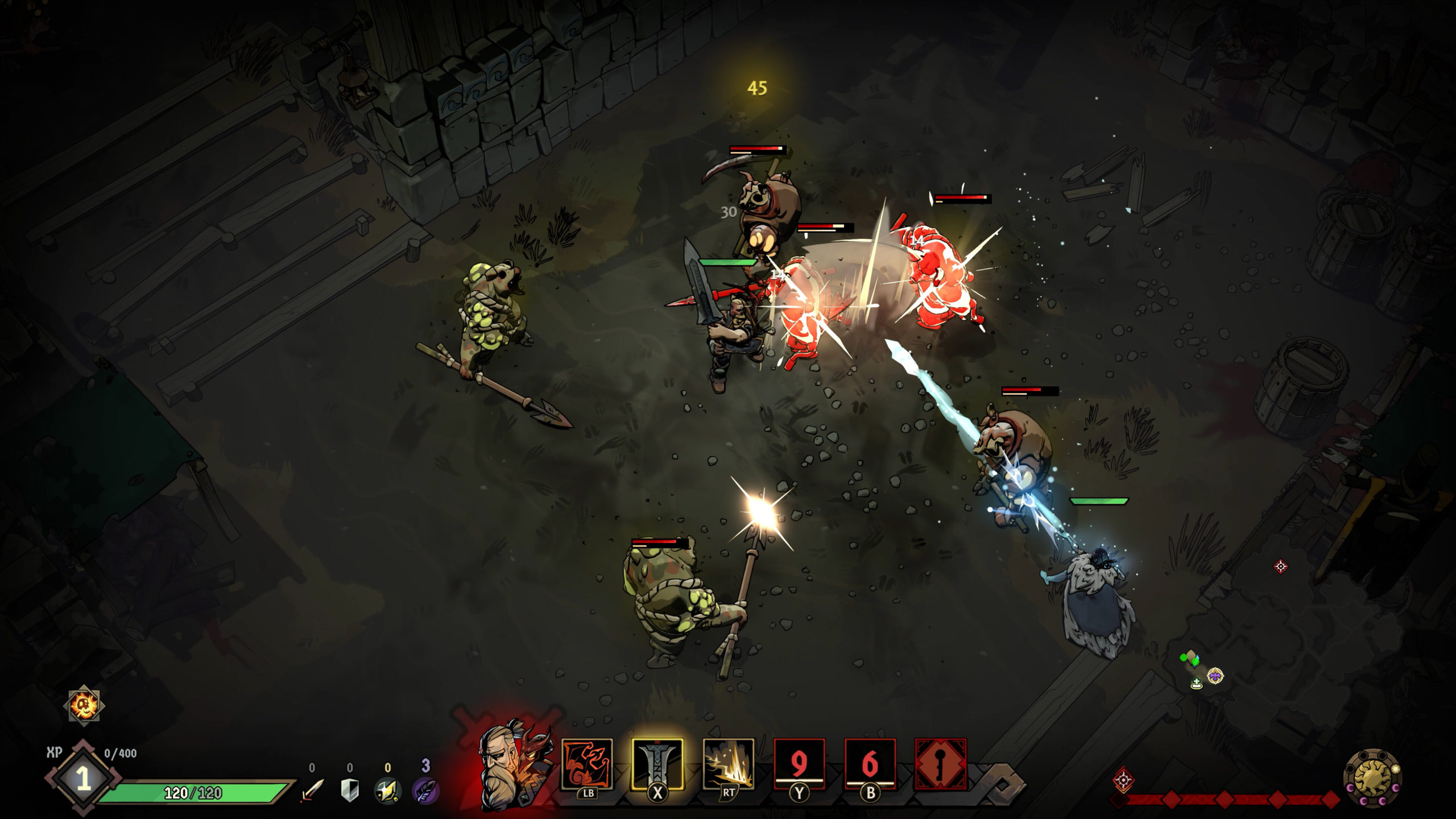
Scarlett Pitch
Given how (not very) far along Ravenswatch is in its development, it’s hugely impressive how graphically beautiful it is and how smoothly it runs. The animations are superb throughout, from the fairytale book menu system gliding about the pages to the way Aladdin can gracefully dive out of the way of damage, it all looks fantastic.
The cartoon-ish, animated art direction suits the sense of these characters wonderfully well and some of the enemy designs are excellent too. If there’s one part of Ravenswatch which is already release-worthy, it’s the graphical presentation and amazing performance. Of course, this is only a slice of what’s to come, so there may be more technical pressures that lie ahead, but what’s on offer here works stunningly.
Chapter 1 is slightly bland however. There’s a lot of empty space and after just a couple of runs the repetition of landmarks was very apparent. Fingers crossed as more chapters are added there’ll be further diversity in settings and maps. The mini-map also isn’t particularly well-realised, with misaligned icons and paths not yet properly drawn. Early Access teething problems, I hope.
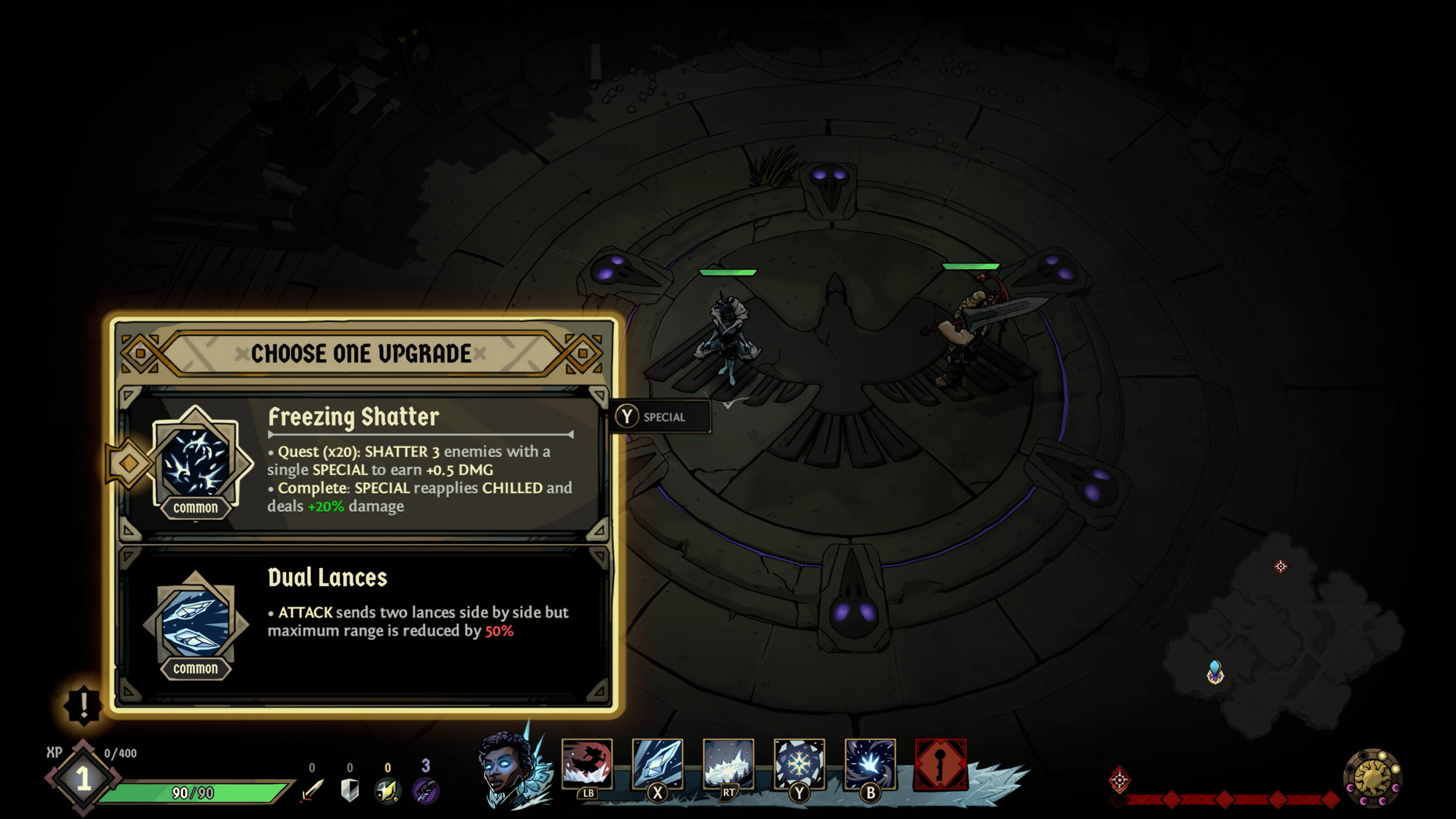
A Promising Start, Not Worth Setting Off For… Yet
Ravenswatch, despite its graphical beauty and solid fundamental mechanics, unfortunately just has too little to recommend at this stage. The gameplay systems and some enemy compositions in particular are heavily imbalanced, especially for solo players. While there is up to 4-player co-op, there’s no matchmaking feature, meaning you need to recruit friends or forum randoms, which is an unnecessary barrier.
A typical run would take about 20-30 minutes to complete (shorter if you fail), and while there are extra difficulties and you can level up each hero outside of each run, it just doesn’t feel like enough yet. I beat the chapter 3 times and failed 3 times, using each of the heroes at least once. In total that took me about 2 hours, so the longevity of Ravenswatch as it presently exists isn’t great.
There’s a lot of potential, and I mean a lot. I’m very excited for what more is going to come from this studio and this title, so it’s worth keeping your eye on this one as it progresses through its development cycle. However, at the moment I’d encourage you to adopt a wait-and-see approach, especially with Diablo IV only a couple of months away. Having said that, if you’re a fan of ARPGs, Ravenswatch could be a real gem for you in a few months’ time.
Ravenswatch, as it is in Early Access right now, feels like a Ferrari with a Fiat engine. It looks gorgeous and runs beautifully, but there’s a lack of charming backstory, a number of balance issues that need to be rectified and a lot more content needed to make this a fulfilling package. The core systems are all there however, and I can’t wait to see how Ravenswatch looks in a few months from now.
Ravenswatch is available now on PC via Early Access (review platform).
Developer: Passtech Games
Publisher: Nacon
Disclaimer: In order to complete this review, we were provided with a promotional copy of the game. For our full review policy, please go here.
If you enjoyed this article or any more of our content, please consider our Patreon.
Make sure to follow Finger Guns on our social channels –Twitter, Facebook, Twitch, Spotify or Apple Podcasts – to keep up to date on our news, reviews and features.
